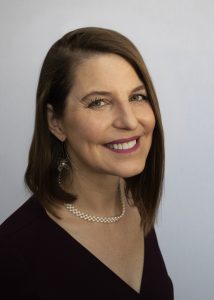3.1: Power and Influence
Lianne Lefsrud

Workshop Introduction
Most engineering students receive some instruction on team functioning, leadership, entrepreneurship, and perhaps management conundrums. Power and influence underlie these group dynamics, yet are rarely examined. This workshop will:
- Outline various theories of power,
- Discuss how these forms of power can be recognized and managed, and
- Give relevant examples and exercises for use in the classroom.
Presenter: Dr. Lianne Lefsrud, P.Eng.

Lianne Lefsrud examines methods of hazard identification and risk management, risk evaluation and social license to operate, and drivers of technology adoption in oil and gas, mining, pipelining, construction, agriculture, and railroading, among other industries. Her research asks: How can decision-making systems be enhanced so that organizations are better equipped to recognize, adapt to and absorb unforeseen events and manage the resulting risks? She has an BSc in Environmental Engineering, MSc in Environmental Engineering and Sociology, a PhD in Strategic Management and Organization. Professionally, her career spans two decades with senior roles in industry, consulting, and regulation. Besides doing internationally award-winning research, she also provides policy and strategy advice to government and industry. For more, see:
- Link to Website: www.liannelefsrud.com
- Link to Twitter: https://twitter.com/lefsrud.
Seminar
The content shown is taken from a seminar recording presented by Dr. Lianne Lefsrud with an accompanying PowerPoint. If you wish to access the full PowerPoint presentation, please click this link which will take you to a google drive folder.
Key Takeaways
- Power is not absolute, it is a relative concept that can take many forms. Much of one’s relationship with power is context-dependent, and relies on the relationship between individuals.
- Power may also be defined as a function of its legitimacy and how it’s wielded. Utilizing power may be done through many means, including inaction or unconscious intent, and thus the ‘extent’ of one’s power may be considered equivalent to the potential to exercise it.
- There are many attributes an individual may have that can give them power. These can stem from the individual themselves, such as their charisma or expertise, or even from factors external to them, such as their network of connections or even their use of societal approval/status.
- Organizations can also give someone power due to organizational structure. Verticality in an organization can dictate superiors through formal positions and their control over resources and decisions. Horizontal power discrepancies can also exist due to someone’s unique role/skillset, or their centrality in operations, making them more important and less replaceable.
- Therefore to increase one’s own power, or the power of an organization, one must ensure that others are dependent on them while being independent themselves. To facilitate this, resources must be generated that demonstrate irreplaceability. One must also be sure to be constantly on the lookout for other opportunities, ensuring strategic contingencies are in place.

